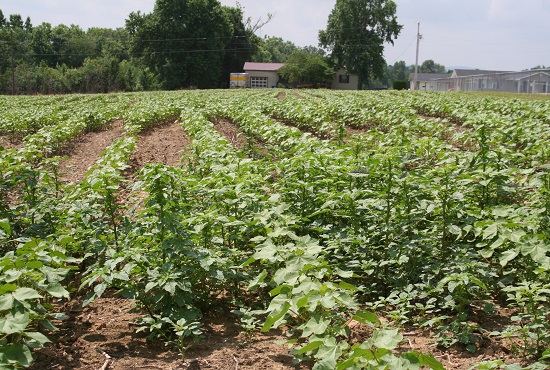Prepare to Price 2024 Cotton Late in the Marketing Season
Fundamentals drove cotton prices down to the mid-70s before selling ran out of steam and a small bit of demand brought prices back to the high 70s for old crop and the mid-70s for new crop. July found its support at 77 cents but slipped lower before recapturing the 78-cent mark, settling the week at 78.06. Likewise, December searched out its support at the 74-cent mark and settled the week at 75.97.
While the house hunting is not over, the respective contracts should find solid support at those levels, and most of the remaining May and early June trading will likely be within 200-300 points of those settlements. Demand, measured in terms of mill sales (with a hint of new crop rains), are the only fundamentals that will affect the July contract. Yes, mill fixations will have a role. But the imbalance in on-call sales vs on-call purchases still favors marginally lower prices.
The fortunes of the new crop December contract will be tied to Mother Nature’s gift of moisture across the Southwestern U.S. cotton region. Yes, the growing conditions across the great Indian land area, along with the Pakistani conditions and the usual disastrous beginnings of the Chinese crops, are all eminently important. Yet, the New York ICE December contract will look to weather conditions across the great U.S. Southern Plains for price direction during the coming two months.
My totally worn-out record remains the discussion of cotton’s faltering demand and the declining level of disposal income. Removing food, housing, and energy cost from consumers’ disposable income leaves scant funds for other items – and specifically cotton clothing and apparel. The boom in cotton prices awaits a boost in consumer income (given that costs/prices are not coming down).
History is noticeably clear in its message that consumer income will not increase until the U.S. business and manufacturing economy again becomes productive. Remember, the only portion of the U.S. economy that is growing, in reality, is government. We can only pay ourselves so many times before the shell game catches up with us. With apologies to Pogo, he said it best, “We have met the enemy, and he is us.”
As stated last week, there are windows in the price line that open for higher prices due to true production disasters, but prices cannot sustain any significant rally without being led by demand. Just think of cotton’s recent February-March price rally – a month later, it totally disappeared and then some. That rally presented growers with the opportunity to price in the high 80s, but the December contract could not sustain the 85-cent level.
Ah, the consumer. The economic health of the consumer is the only thing that matters. If you are not sure you can remember that, then do this: write it on your hand or wrist just as many did in grade school just before a test. The consumer will lead the economy out of the current economic doldrums. Once he does, there will be a price explosion, as pent-up demand has grown to a near unpresented level, and apparel goods – cotton rich goods – will fly off the shelf.
“Cotton rich.” Did Cotton Incorporated’s high flying Madison Avenue guys coin that phrase? Give them credit, they are supremely missed. Yet, the consumer will find their way back to cotton. Triple repeating: cotton demand awaits the consumer’s emergence, which awaits any news of actual inflation control. Inflation is NOT coming down as the media popularizes. Yes, the rate of growth in inflation has slowed. Yet, its growth continues to remain too high to allow the consumer to get off its life support systems.
Yes, I understand you are seeing more economics than you want. However, one cannot fool the market. Politicians can fool us. They can fool themselves. Yet, they cannot fool the market. The market is broadcasting those words loud and clear. There has never been a rule, regulation, or law that attempted to change market dynamics that the market itself has not found a way around. Every attempt to circumvent the free market has failed. Just ask the Union of Soviet Socialist’s Republic. The People’s Republic of China is the hot discussion now, but eventually, the free market will take it down.
These are lessons we are seeing play out in the cotton market, difficult as it might be to realize. The laws of economics are not changing. Today’s events are reinforcing the laws.
This week’s export sales report showed U.S. net sales of upland cotton at only 97,400 bales, during a week with prices in the 80-cent area. Sales were made to 17 countries, but only three purchased more than about 6,000 bales. Textile business is extremely poor, so cotton demand is poor.
Much of the vast Southern Plains does need moisture. However, the south Texas crop and a substantial portion of the Rolling Plains have received positive rains. Yet, much of the important Texas 1-N and 1-S regions do need moisture.
Keep your heels dug in. Cotton’s pent-up demand will surface, but not before the first quarter of 2025. Until then, the mid-70s to low 80s will carry the headlines. The 2024 crop will have to be priced late in the marketing year. Begin to think about what those arrangements might be.
Give a gift of cotton today.








